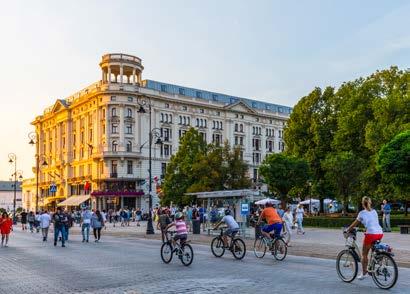
12 minute read
Łazienki Map
3 Presidential Palace
Guarded by lions and stern-looking soldiers, of all the landmarks that line Krakowskie Przedmieście, none is more important than the Presidential Palace. Construction began in 1643 at the behest of Stanisław Koniecpolski, though was only completed after his death. It then passed into the hands of various aristocratic families, becoming famed for its banquets in the 18th century - the most extravagant of which marked the coronation of Stanisław II August Poniatowski in 1789; over 2 million PLN was spent entertaining the 4,000 guests.
Advertisement
Poniatowski proved to be one of the nation’s most controversial monarchs - and also its last. Among his successes was the Constitution of May 3, 1791. Signed on these very grounds, it was the 2nd such document in the world, after the US Constitution. The large monument in front of the Palace is of the king’s nephew, Józef Poniatowski. A Polish general, he defended Warsaw during the Kościuszko Uprising and eventually died in the service of Napoleon.
After 1818 the Palace became the seat of the Viceroy of the Polish Kingdom, entertaining many a visiting Tsar before burning down in 1852. Rebuilt and frequently remodelled, at the beginning of the 20th century an entire wing was demolished to make way for the Hotel Bristol. When Poland regained its independence in 1918 the Palace was commandeered to serve as home for the Prime Minister, and somehow it survived WWII. More momentous events came in 1955 when the Warsaw Pact - the Soviet Union’s answer to NATO - was ratified within its walls. Since 1994 it has served as the official home of the Polish president (currently Andrzej Duda), which is why you’ll find streams of limos heading in and out, and square-jawed soldiers pointing their weapons at anyone who strays too close.QG-5, ul. Krakowskie Przedmieście 46/48.
Curiosity Crossroads!
Carry on down the Royal Route? Or perhaps hang a right after the Hotel Europejski down ul. Tokarzewskiego-Karaszewicza towards Plac Pisudskiego (p.28)? Choose the latter to see Warsaw’s largest square and escape the urban hub-bub via the lovely Saxon Garden, a stroll through which leads you into the City Centre (p.26) and on a path to Hala Gwardii and Hala Mirowska (p.28) - two massive indoor markets 1520mins on foot from where you’re standing. 4 Bristol & Europejski Hotels
Two of the biggest, most famous landmarks on prestigious Krakowskie Przedmieście street are former palaces turned luxury hotels today. The first is Hotel Bristol at ul. Krakowskie Przedmieście 42/44. First built in 1900, a brass plaque outside boasts of its many famous guests: Picasso, Nixon and Dietrich, to name but a few. In 1993 it was restored to its pre-war glory and the re-opening ceremony was such a big deal, it was attended by Ms. Margaret Thatcher. Refreshed repeatedly since, it is certainly among the very top hotels in the capital, boasting an interior by world-renowned designer Anita Rosato that blends secessionist and art deco glamour with modern luxury. If you can’t afford to spend the night, you can still drop in to the wonderfully old school Cafe Bristol - a perfect place for coffee or breakfast (more on p.64).
Cycling past Bristol Luxury Hotel.
Photo F. Kwiatkowski © City of Warsaw
Across the street is the revamped Raffles Hotel Europejski (ul. Krakowskie Przedmieście 13). The first hotel to re-open after WWII, it entered Varsovian folklore in 1967 when a group of young upstarts calling themselves ‘the Rolling Stones’ stayed here, under the watchful eye of the authorities, and had themselves quite a time tipping back vodkas in the hotel bar. In 2018 the hotel was refurbed for the Raffles brand and today it is a stunning luxury space full of contemporary art and custom furnishings. If you want to have your proverbial socks knocked off, explore the building’s many first-rate dining and drinking venues, including Chaud Pain boulangerie (p.74), Lourse patisserie and EPOKA restaurant (p.79). Though you might not be able to afford anything, you can still wander through Europejski Boutiques - the most exclusive shopping experience in the country.QG-5, ul. Krakowskie Przedmieście 42/44 & 13.
5 The University of Warsaw
Going further, why all of a sudden do you see young, fresh faced kids? Well, you’re in Warsaw Universityland. The Uni’s main campus lies behind the grand gateway at ul. Krakowskie Przedmieście 26/28. Dating from the 17th century the main building, known as ‘Villa Regia,’ was remodelled and renovated several times before Warsaw U was established here in 1816. Chopin even lived here, with plaques found at the entrance to the campus - look up at the building behind you to see another location he lived in! The uni had a tough time under Russian rule; closed in retaliation for the 1830-31 Uprising the university continued to operate underground, though by 1859 the Tsar calmed down enough to rubber stamp the creation of a School of Medicine. Today, with some 48,000 students on the roll call, the university stands out as the largest and arguably best in Poland. Notable alumni include former Israeli premier Yitzhak Shamir, writer Witold Gombrowicz, award-winning travel writer Ryszard Kapuściński, the late president Lech Kaczyński and the poet Julian Tuwim.QG-6, Krakowskie Przedmieście 26/28, MNowy Świat-Uniwersytet, www.en.uw.edu.pl.
6 Holy Cross Church
No Chopinologist can leave Warsaw without first visiting the final resting place of his heart. Added to the church in 1882 his heart was sealed in an urn and then placed behind a tablet bearing his likeness specially carved by Leonardo Marconi.
Although this serves as the church’s key draw there are several other features of note to tempt the visitor inside this astonishing Baroque creation. The church’s history originally dates from the 15th century when a small wooden chapel stood on the site. Destroyed during the Swedish Deluge of the 1650s, the church was rebuilt in 1682, with the cornerstone being ceremoniously laid by Prince Jakub, son of King Jan III Sobieski. Designed by the royal architect, Jakub Bellotti, it was completed in 1696 though over time would see numerous additions to its shape. The most notable of these would come in the following century when Józef Fontana added two Baroque crowns to the square-cut twin towers. His son Jakub would later extensively refurbish the façade with Jan Jerzy Plersch adding elaborate decorative touches to the interior.
Throughout history the church has played its role in Warsaw’s glories and calamities. It was here that the last Polish King forged the Order of the Knights of St Stanislaus, and it was directly outside in 1861 that Russian troops brutally suppressed a patriotic
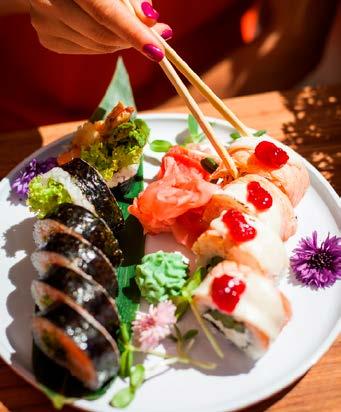
Chopin Recitals
Poland’s greatest composer, Fryderyk Chopin (1810-1849) was born 50km west of Warsaw, moving to the capital with his family as a baby. A prodigy from the start, he came to fame here before being exiled at age 20 due to the November Uprising of 1830. Walking down Warsaw’s Royal Route, Chopin-related sites are in abundance. In addition to Holy Cross Church and the Chopin Museum (a short walk down ul. Ordynacka, p.44), keep an eye out for several ‘Chopin Benches’ which explain the history of relevant sites and play a burst of the composer’s music at the touch of a button.
Live Chopin recitals are a popular tourist activity in Warsaw, and there are two points along the Royal Route where you can attend one. The first is Chopin Point on Plac Zamkowy (F-4, ul. Krakowskie Przedmieśćie 87/89; Fri-Sun only at 19:00, 90/65zł), the second is Chopin Salon on ul. Smolna 14/7 (H-7, every day at 19:30, 60/40zł). If you’re here on a Sunday, pack a picnic and head to the Chopin monument in Łazienki Park (p.48) to hear free outdoor recitals at 12:00 and 16:00.
DELICIOUS JAPANESE & ASIAN SPECIALTIES SUSHI, RAMEN, LUNCHES, KIDS MENU FIND IT ALL AT TOKYO SUSHI
ul. Nowy Świat 50, tel. 22-657-15-89 C.H. Blue City, tel. 22-311-71-30 C.H Galeria Mokotów, tel. 22-161-35-41 Delivery available everywhere in Warsaw Order online at www.tokyosushi.com.pl

Copernicus monument at the Polish Academy of Sciences
ul. Nowy Świat
Time to take a break! Crossing Świętokrzyska, Krakowskie Przedmieście becomes Nowy Świat (G-7) - one of THE places to be seen in Warsaw. Home to numerous bars and eateries, in addition to those below, you’ll find many more on the trendy side streets of ul. Chmielna and ul. Foksal.
Bi Ba Bo: This nostalgic venue hearkens back to Warsaw’s interwar aura of glamour with delicious coffee and Polish cuisine enriched with international flavours. More on p.80.Qul. Nowy Świat 66.
Tehran: Experience the specialties (mutton, lamb) and exotic flavours (mint, rose, saffron) of Iran in this colourful eatery that exudes good energy. More on p.86.Qul. Gałczyńskiego 9.
Blikle Café: Famously patronised by Charles de Gaulle, this classy, august venue offers breakfast, lunch, ice cream and outstanding desserts that are part of Warsaw folklore.Qul. Nowy Świat 33.
Swing: Asian fusion cuisine, paired with enticing cocktails or carefully selected wines. Live music on weekends. See p.82.Qul. Nowy Świat 31.
The Pavilions (Pawilony): Duck through the
courtyard of no. 22 after 17:00 to find this popular maze of dive bars offering street food, cheap beer and nary a tourist in sight.Qul. Nowy Świat 22/28. protest. It was this bloodbath that lit the touchpaper for the January Uprising of that year. Devastated during the Warsaw Uprising in 1944 the church was painstakingly rebuilt at the end of the war and is today a feast for the heart, eyes and soul. The organ (built in Salzburg in 1925) is the largest in Warsaw, and other points of note include an urn with the remains of Nobel Prize winning author Władysław Reymont, and tablets honouring various Polish icons including poet Juliusz Słowacki and WWII hero Władysław Sikorski.QG-6, ul. Krakowskie Przedmieście 3, MNowy Świat-Uniwersytet, tel. (+48) 22 826 89 10, www.swkrzyz.pl. Open 10:00-11:00, 13:00-16:00; Sun 14:00-16:00.
7 Nicolaus Copernicus Monument
The founder of modern astronomy. A sheltered academic, Copernicus made his observations alone, a century before the invention of the telescope. His book De Revolutionibus (1543) posited that the earth rotated on its axis once a day, travelled around the sun once a year, and that man’s place in the cosmos was peripheral. Though obvious today, this was an utterly radical idea at the time. Although those who propagated his ideas were burned at the stake and the Catholic church placed De Revolutionibus on its list of banned books (as late as 1835), there was no turning back progress. The modern cosmological view - that our galaxy is one of billions in a vast universe - is this man’s legacy.
The statue itself was unveiled in 1830 and has seen its share of adventure. During WWII the Nazis placed a new plaque here insinuating that the great man was in fact - gasp! - a German. A boy scout named Alek Dawidowski ducked the guards and removed the plaque. Boiling with fury, the Nazis removed the monument, then dynamited a few others for good
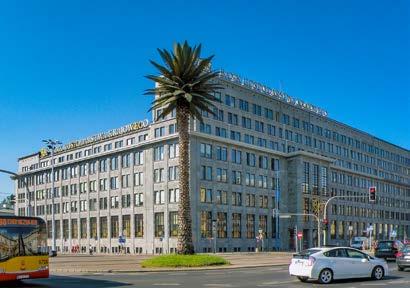
measure. The statue was recovered after the war, and Dawidowski entered Polish folklore for his bravery. QG-6, ul. Krakowskie Przedmieście, MNowy ŚwiatUniwersytet.
8 The Palm Tree

Wondering what a giant palm tree is doing in the middle of this roundabout? Modern art, my friends. In this case, a project called ‘Greetings from Jerusalem’ by Polish artist Joanna Rajkowska, who, during a trip to Israel, was struck by the brainwave of sticking a palm tree in the Polish capital to give it some sunny cheer (in the most ironic way possible). The palm tree is actually a steel column specially designed to bend in the wind, covered with natural bark and leaves made from polyethylene. Quite popular, the permanent installation reminds us of all the beautiful and exotic places we could be instead. QG-8, Rondo de Gaulle’a, MNowy Świat-Uniwersytet.
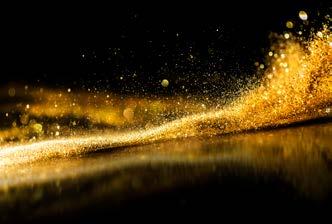
Choose Your Adventure!
From the Palm Tree, Warsaw’s ‘Royal Route’ continues another 10km, past the Ujazdowski and Łazienki Parks, before it ultimately ends at Wilanów Palace - the 17th century private residence of King Jan III Sobieski. While a walking tour of the remaining 10km isn’t realistic or especially rewarding, Łazienki (p.48) and Wilanów (p.52) are both required for getting a broader sense of Warsaw’s former glory as the grand capital of a vast and wealthy commonwealth stretching from the Baltic to the Black Sea. You can easily continue your tour to either from the Foksal 01 bus stop on ul. Nowy Świat. To get to Łazienki Park, simply hop on bus numbers 116 or 180 and get off three stops later at ‘Łazienki Królewskie.’ For Wilanów, take the same numbers, or catch the direct E-2 bus; get off at ‘Wilanów.’ Use warsaw.jakdojade.pl for live public transit connections.
If your feet aren’t too worn out, heading 300m down charming ul. Ordynacka (G-7) leads you direct to the Chopin Museum, where you’ll connect with our Powiśle district tour (p.44).
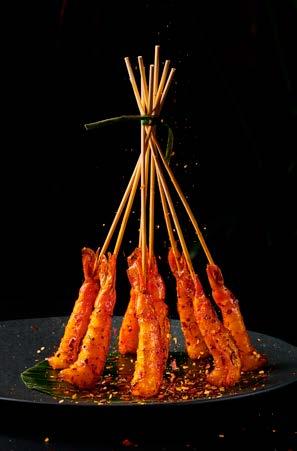
Alternatively, head west down pedestrianised ul. Chmielna, past many a bar and restaurant, 10mins to the Palace of Culture (p.25).
Of course you can always backtrack to the Metro to make a shortcut to the River Boulevards (p.45) or onward to Praga (p.55). Decisions!
scan me
A A ss ii a a n n F F u u ss ii o o n n R R e e ss tt a a u u rr a a n n tt & & C C o o c c k k tt a a ii ll B B a a rr
ii n n tt h h e e h h e e a a rr tt o o ff W W a a rr ss a a w w
N N o o w w y y
Ś Ś
w w ii a a tt 3 3 11
A A s s ii a a n n II n n s s p p ii rr e e d d M M e e n n u u II n n n n o o v v a a tt ii v v e e C C o o c c k k tt a a ii ll s s
P P rr e e m m ii u u m m & & M M o o d d e e rr n n II n n tt e e rr ii o o rr
L L ii v v e e M M u u s s ii c c E E v v e e rr y y W W e e e e k k e e n n d d E E v v e e n n tt P P ll a a c c e e
+ 4 8 6 6 7 9 8 8 8 8 9 w w w . s w i n g r e s t a u r a c j a . p l










